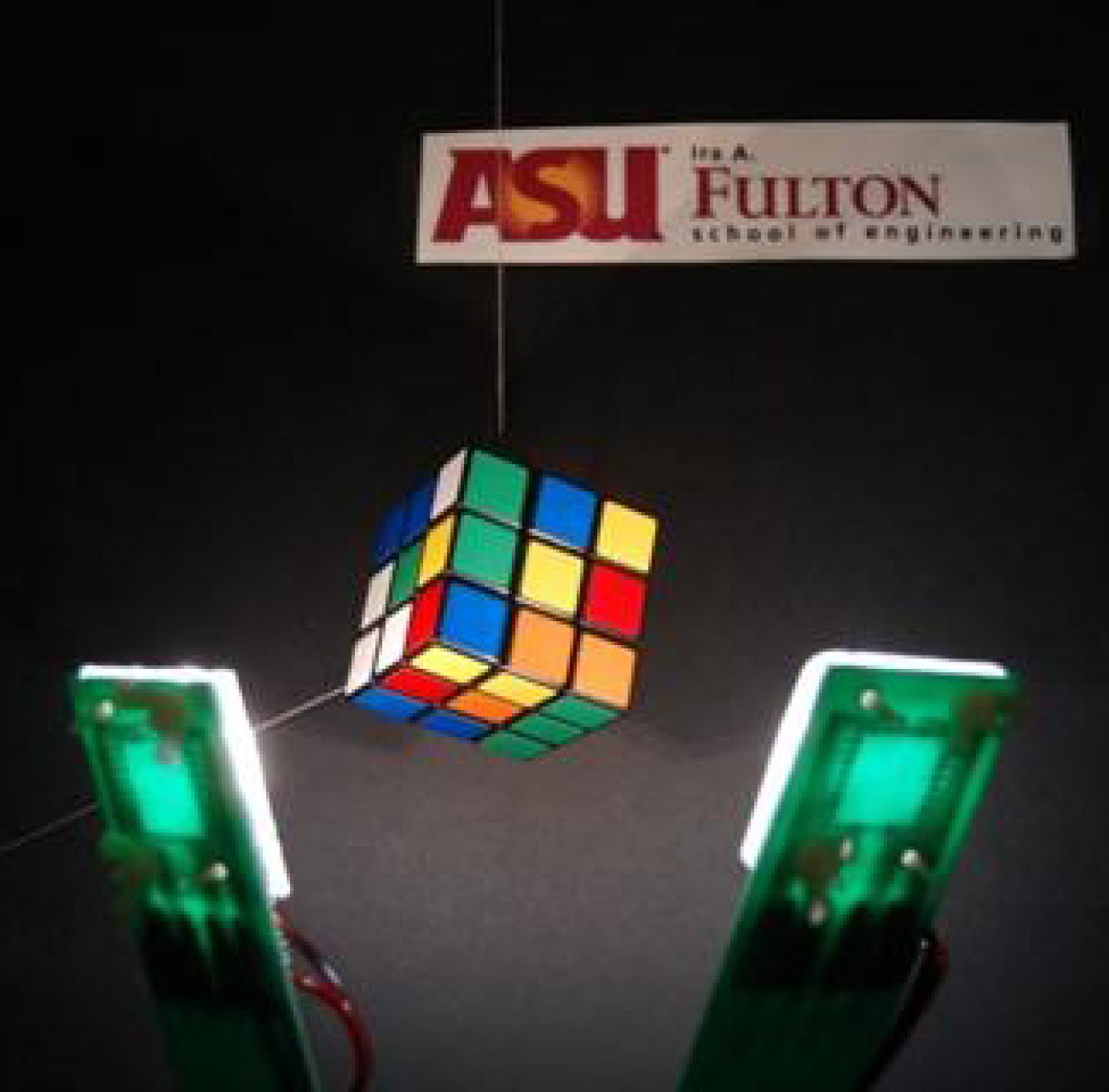
Cube illuminated by a single-dopant WOLED to show its white color and high color rendering index.
With help from DOE funding, researchers at Arizona State University (ASU) are partnering with Universal Display Corporation to overcome cost and manufacturing challenges of white OLEDs (WOLEDs). Current state-of-the-art WOLED technology utilizes multiple emissive materials, resulting in color instability and color aging issues that affect the performance and operational lifetime of OLED luminaires. What’s more, such devices require the deposition of multiple emissive layers and/or multiple dopants in the emissive layer, often with complex device structures.
ASU is leading an effort to simplify the fabrication of WOLEDs by developing devices based on a single emitter. Single-doped WOLEDs are expected to lower the fabrication cost of WOLEDs significantly by decreasing the complexity of device fabrication, increasing the robustness of materials, and providing more cost-effective alternatives to the state-of-the-art iridium-based phosphorescent emitters. Single-doped WOLEDs may also provide a greater control of emission color by eliminating color aging.
To achieve white light emission from a single emissive dopant, the team is developing blue emitter materials that, when in proximity of each other, interact to form excimer emission in the orange spectrum. With optimum doping, the emission ratio of monomer (blue) to excimer (orange) can be tailored to achieve white light. ASU has synthesized several classes of square planar metal complexes to identify the most stable, efficient molecular dopants and excimers. All metal complexes in this project are platinum- and palladium-based phosphorescent emitters, rather than conventional iridium-based materials that have limited supply and high cost.
The researchers have demonstrated the first single-doped white OLEDs to have an external quantum efficacy of over 20% while producing ideal white light. They’ve also demonstrated efficient single-doped WOLEDs with reasonable operational stability. In their investigation of blue platinum-based emitters, they’ve demonstrated the most efficient and stable deep-blue platinum-based OLEDs to date and have achieved record stability of platinum-based OLEDs comparable to state-of-the-art iridium-based OLEDs. (August 2018)
Return to Research Highlights.

